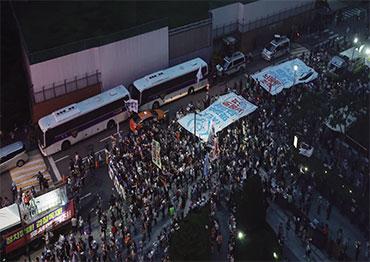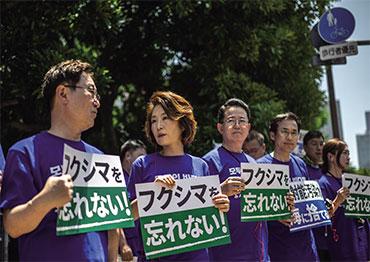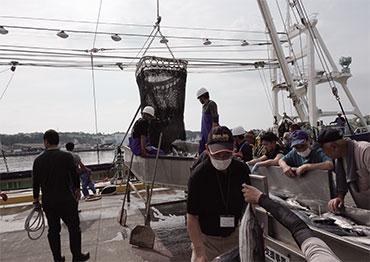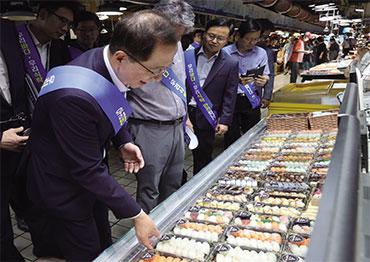Since Japan announced its plan to dump more than 1.3 million tons of contaminated water stored at the Fukushima nuclear power plant into the ocean after treatment in April 2021, it has raised serious concerns among local communities and neighboring and Pacific Island countries over the threat to human health and the environment.
As Japan’s schedule to implement the plan, which it set for summer 2023, inches closer, the International Atomic Energy Agency (IAEA) released a report on July 4 that declared Japan’s plan meets international safety standards, saying that it will have a “negligible” impact on people and the environment.
But given the complexity of the issue and the controversial plan’s potential impact, critics argue that the IAEA report is far from adequate to clear the doubts regarding the safety issues.
Since the 2011 tsunami caused severe damage to the Fukushima power plant, the Tokyo Electric Power Company (TEPCO), the government-controlled company that runs the plant, has been pumping water inside the reactor to cool down its fuel rods. As the water becomes contaminated in the process, it is stored in massive tanks, filling more than 1,000 over the past years.
In early 2021, Japan said that it was running out of space and announced a plan to gradually release the water into the Pacific Ocean over the next 30 years, starting in summer 2023. Japan will filter the water through the TEPCO-developed Advanced Liquid Processing System (ALPS), which it claims will reduce the most radioactive substances in the water to safe levels, except for tritium and carbon-14. TEPCO says that it will then dilute the treated water with seawater to reduce the final levels of tritium and carbon-14 to those that present minimal risk to humans and marine life.
Tritium is an isotope of hydrogen, which is hard to separate from water. Japan plans to dilute it to below internationally approved levels for release, and said that releasing diluted water with tritium is common practice in the nuclear industry.
Yet the plan was roundly slammed by Japan’s fishing and seafood industry and neighboring countries, including China, South Korea and Pacific Island countries. While some scientists supported the plan, many questioned its transparency and methodology.
Critics argued that the Fukushima plant’s contaminated water has come in contact with melted nuclear fuel and that its radioactive substances are far more complex than those from safely operating plants. According to a panel of independent scientists formed in March 2022 by the Pacific Islands Forum (PIF), an intergovernmental organization made up of 18 Pacific Island countries including New Zealand and Fiji, Japan’s plan is fundamentally flawed as it assumes that the Fukushima water is no different to the wastewater created during normal operation of a nuclear plant. As a result, TEPCO has examined only nine radioactive materials among a total of 64, with the remaining 55 not tested at all.
The panel also questioned the reliability of the data provided by the Japanese government, as the dumping plan is based on measurement of a 30-liter sample out of more than 1 million tons of water, which the panel said is not enough to gauge the actual composition and concentration levels of the radioactive substances.
In the report formally presented by IAEA Director General Rafael Mariano Grossi to Japanese Prime Minister Fumio Kishida during his visit to Japan on July 4, the UN nuclear watchdog said that Japan’s plans to release treated water stored at the Fukushima plant are consistent with safety standards set by the agency.
“Based on its comprehensive assessment, the IAEA has concluded that the approach and activities to the discharge of ALPS-treated water taken by Japan are consistent with relevant international safety standards,” Grossi said in a foreword to the report.
But the IAEA’s assessment report did not appease the concerns of its critics, who argue that the IAEA represents the interests of the global nuclear power industry and it is neither an impartial nor an appropriate agency to evaluate the environmental threat the plan poses.
In a news conference held on July 4, Chinese Ambassador to Japan Wu Jianghao stated that the IAEA serves to “promote the safe, secure and peaceful use of nuclear technology,” and is “not an appropriate agency to assess the long-term impact of nuclear-contaminated water on the marine environment.”
The fact that Grossi has rushed to praise Japan immediately after Tokyo unveiled its release plan in April 2021 undermines the agency’s impartiality. In a comment on April 13, 2021, the same day Japan announced the plan, Grossi described it as a “milestone” that will help pave the way for decommissioning the Fukushima nuclear power plant, adding it is “technically feasible and in line with international practices.”
Grossi’s comments leave the impression that the IAEA decided to back Japan’s decision even before the agency started its safety review. Moreover, the timing of the report’s release, which coincides with Japan’s timetable to start dumping the water is also seen as more than mere coincidence.
When asked whether there was any disagreement among the experts behind the report, which included input by experts from 11 countries, Grossi admitted there were some concerns among one or two experts, but insisted that the report is “scientifically impeccable.”
Liu Senlin, a researcher with the China Institute of Atomic Energy who participated in the IAEA’s assessment work, apparently was one of those who disagreed. Liu told Chinese newspaper Science and Technology Daily on July 6 that the report appears to have been released in haste, as experts were given a very limited window to voice their opinions on the draft report prepared by the IAEA Secretariat, and there were no further discussions and consultations until the report was formally released.
Stressing that the IAEA report is solely based on data and samples provided by TEPCO without independent on-site supervision and sample monitoring by the IAEA, Liu said that the report is more of a “peer review” than a comprehensive assessment.
Liu warned that even if the discharged water complies with the current safe levels according to IAEA safety standards, they might not comply with standards in three decades. He urged the IAEA to establish an independent long-term international monitoring mechanism for effective supervision of Japan’s measures.
Liu’s view was backed by the China Atomic Energy Authority (CAEA). On July 6, the CAEA released a statement, saying that the IAEA report failed to fully reflect expert views. Expressing regret over “the hasty release” of the report, it said that Japan should not take the watchdog’s report as a “shield” or a “green light” to press ahead with its discharge plan.
“The Report does not fully reflect the opinions and comments of all the experts, and there are limitations and partiality in relevant conclusions,” said the statement.
Echoing Liu’s concerns that the IAEA report drew its conclusion based on samples and data provided solely by Japan, the CAEA stressed that Japan “did not justify the authenticity and accuracy of the data on the nuclear-contaminated water,” nor did it “justify the long-term effectiveness and reliability of the treatment facilities.”
In a statement released on July 4, China’s Foreign Affairs Ministry said that “due to its limited mandate, the UN nuclear agency failed to review the justification and legitimacy of Japan’s ocean discharge plan, to assess the long-term effectiveness of Japan’s purification facility, or to corroborate the authenticity and accuracy of Japan’s nuclear-contaminated water data.” It continued to urge Japan to hold off its ocean discharge plan.
The South Korean government, on the other hand, has softened its stance, saying that it respects the conclusion of the IAEA and its own analysis that Japan’s ocean discharge plan meets international safety standards. Since assuming the presidency in May 2022, the administration of President Yoon Sukyeol has actively sought to strengthen the country’s political and military ties with Japan.
But South Korea’s opposition parties and civil groups remain highly critical. At a press conference held in Seoul on July 13, several South Korean scientists expressed their disappointment over the IAEA report. Lee Jeong-yun, president of the Nuclear Power Safety and the Future, the country’s first NGO on nuclear issues, said that the report’s biggest problem is that it does not address the performance of ALPS.
One of the major concerns critics have raised repeatedly in the past two years is Japan’s claim that ALPS can effectively filter the contaminated water cannot be verified independently. The skepticism is well-founded. TEPCO has a long history of data falsification and disaster cover-ups. The company previously admitted that it falsified data at the Fukushima plant to cover up problems on 199 occasions between 1977 and 2002.
By analyzing samples provided by TEPCO without evaluating ALPS itself, the IAEA is seen to have failed to address a key element of the controversy. “It claims to remove all radioactive materials except tritium, but there is no reliable data on that,” Lee said.
Lee also pointed out that it is customary to analyze samples three times in order to get reliable numbers, but the IAEA only analyzed the first sample of contaminated water and published the report without analyzing the second and third samples.
According to Paek Do-myung, professor emeritus of the Seoul National University Graduate School of Public Health, the IAEA is violating its own guidelines to include all stages for the evaluation of a facility or program, from site assessment to decommissioning. On the contrary, the IAEA report only evaluated the commission stage. “They called it a controlled discharge, but they didn’t evaluate any of the most important verification steps,” Paek said at the July 13 press conference.
In a meeting with Grossi at South Korea’s National Assembly in Seoul on July 13, lawmakers from South Korea’s opposition Democratic Party also voiced protests over the report.
“The IAEA has limited itself to only providing technical support for the discharge and a safety review of the Japanese government’s request, without examining other alternatives,” lawmaker Woo Won-shik told Grossi. Calling the IAEA’s assessment “biased in favor of Japan from the very beginning,” Woo said that the report is a “self-verification” tailored to serve Japan’s interests.
Besides the continued disapproval of neighboring countries, the Japanese public is not entirely convinced either, let alone the fishing and seafood industries which have held a series of protests.
In the past months, the Japanese government has set up funds to subsidize the fishing industry and launched massive advertising campaigns to help convince a skeptical public that releasing treated Fukushima water into the ocean is safe.
But according to a poll conducted by Kyodo News on July 16, 80.3 percent of Japanese respondents said that they felt the explanation provided by the government on the issue was insufficient. Only 16.1 percent said the government’s explanation is enough. The same poll found the approval rating for Prime Minister Kishida’s Cabinet slid to 34.3 percent, dropping from 40.8 percent in June and nearing the lowest level in his tenure.
But after obtaining the world nuclear watchdog’s approval, Japan appears to be prepared to start discharging the Fukushima water imminently. Given the ongoing controversies regarding the safety of the plan, the disputes look likely to become even more intense.
On July 7, Chinese customs announced that as a precautionary measure, it will ban the imports of food from 10 out of 47 Japanese prefectures for safety reasons and will strictly review the documents for food, especially aquatic products, from other parts of Japan. China is the biggest buyer of Japan’s seafood exports. Analysts warn that if Japan moves to implement its discharge plan, China could impose a total ban on seafood, or even all food imports from Japan.
As the discharge will take three decades to complete, the disputes may set to become a thorny issue for the long term.
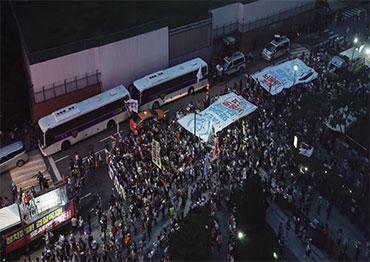
 Old Version
Old Version
